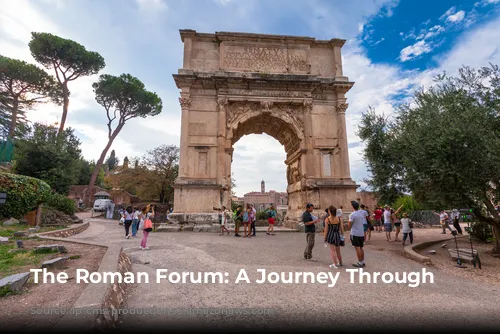Imagine stepping back in time to ancient Rome, bustling with life, the center of a vast empire. This is the allure of the Roman Forum, an impressive collection of ruins that once formed the heart of Rome’s political, religious, and commercial life. Today, the Forum stands as a testament to the grandeur and power of ancient Rome. It’s like a time capsule, allowing us to walk in the footsteps of legendary figures like Julius Caesar and understand the pulse of this ancient civilization.
A Glimpse into History
The Forum’s origins can be traced back to a marshy burial ground in the 7th century BCE. It gradually evolved into a vibrant hub, teeming with activity. Senators debated affairs of state, merchants hawked their wares, and lawyers argued their cases in bustling courts. The Forum was the heartbeat of the Roman Empire, a place where the fate of the world was shaped.
A Decline and Revival
After the fall of the Roman Empire, the Forum’s glory faded. It fell into neglect, eventually used as pastureland and plundered for its valuable stone and marble. However, the Forum’s story didn’t end there. In the 18th and 19th centuries, systematic excavations began, revealing the secrets of this ancient city. And even today, archaeologists continue to uncover its hidden treasures.
Exploring the Forum’s Treasures
The Forum is a vast open-air museum, filled with incredible architectural marvels. The Arco di Tito, a triumphal arch built to celebrate the victories of Emperor Titus, stands as a reminder of Rome’s military prowess. Nearby, the Museo del Foro houses artifacts unearthed during excavations, offering a glimpse into the everyday lives of the Romans.
The Basilica di Massenzio, an enormous structure started by Emperor Maxentius and completed by Constantine, is a breathtaking example of Roman architectural grandeur. It’s hard to imagine the scale of this colossal building, which once spanned over 300 feet in length.
As you walk through the Forum, you’ll encounter iconic structures like the Tempio di Romolo, the Tempio di Antonino e Faustina, and the Tempio di Giulio Cesare, each with its own fascinating history. The Tempio di Vesta, with its revered sacred flame tended by Vestal Virgins, is a reminder of the importance of religious rituals in Roman society.
Hidden Gems and Unexpected Discoveries
Venture beyond the main attractions, and you’ll uncover hidden gems like the Chiesa di Santa Maria Antiqua, the oldest and most important church on the site. Its walls are adorned with exquisite frescoes, offering a glimpse into early Christian art. This church also leads to the Rampa di Domiziano, an underground passageway used by emperors to access the Forum from their opulent palaces.
Visiting the Forum: Practical Tips
The Forum is easily accessible, with three main entrances: near the Arco di Settimio Severo, the Arco di Tito, and Largo della Salara Vecchia. You can also enter directly from the Palatino, which is part of the same archaeological park. Allow yourself at least 1.5 hours to explore the ruins, as there’s much to see and appreciate.
The best time to visit is early in the morning or late afternoon, as the midday sun can be unforgiving. Wear comfortable shoes and a hat, and remember that shade is limited.
For stunning photos of the Forum, head up to the neighboring Palatino or Campidoglio hill. And if you need a break, the Terrazza Caffarelli, a panoramic rooftop cafe in the Capitoline Museums, offers breathtaking views and delicious coffee.
A Timeless Experience
A visit to the Roman Forum is an unforgettable journey through time, allowing you to witness the grandeur of ancient Rome and experience the echoes of a bygone era. This iconic site is a must-see for any visitor to Rome, offering a fascinating glimpse into the history and legacy of one of the most powerful empires the world has ever known.
